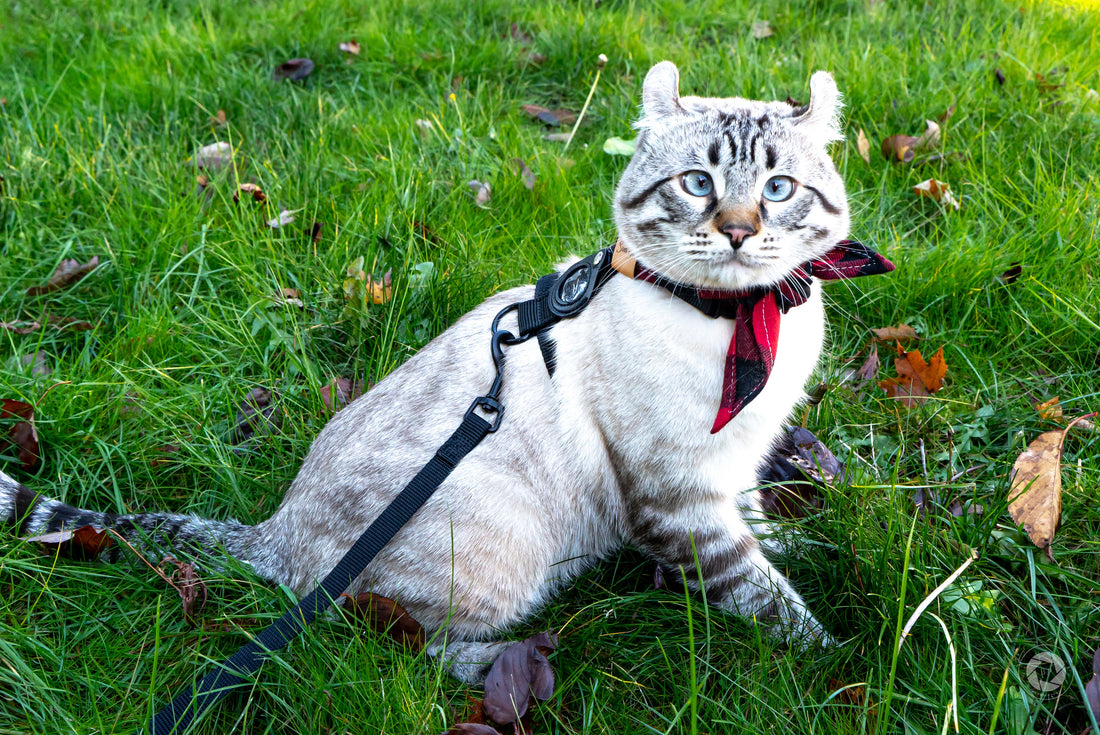
Harness Training Your Cat - Part Two - Getting Adventure Ready
The Art of Harness Training Your Cat
In Part One of our guide, we delved into the myriad reasons why harness training your cat can be an excellent idea. Now, let's dive into the how-to, because getting your feline friend comfortable with a harness can be a game-changer for both you and your cat.
Finding the Perfect Fit

Selecting the right harness is the initial and perhaps most crucial step in harness training your cat. An ill-fitting harness can lead to discomfort, or worse, an escape artist act that leaves your cat bounding away in no time. To avoid this, follow these guidelines:
Measure Twice: Before making a purchase, measure your cat's girth and neck accurately. Most harnesses come with size guidelines, and choosing the right size ensures a snug, comfortable fit.
Adjustable Straps: Opt for harnesses with adjustable straps. These allow you to fine-tune the fit, making it more secure without being too tight.
Escape-Proof Styles: Some harnesses are designed with escape prevention in mind. These often have a figure-eight or H-shape to prevent your cat from slipping out. Consider one of these options if your feline is a Houdini.
Discover Kitty's Preference

Just as humans have clothing preferences, cats have harness preferences. You may need to try a few different styles to find the one your cat finds least objectionable. Some cats tolerate vest-style harnesses, while others prefer the more minimalistic H-style.
Patience and Positive Reinforcement
Once you've got the right harness, it's time to introduce it to your cat. Here's a step-by-step guide to acclimating your feline friend:
Start Slow: Begin by allowing your cat to examine the harness without pressure. Lay it near your cat's favorite spot, so they get used to its presence.
Positive Associations: Encourage your cat to associate the harness with positive experiences. Offer treats and praise when they interact with the harness calmly.
Harness Dress Rehearsal: Before putting the harness on, let your cat wear it for short periods without fastening it. This helps them get used to the sensation.
Gradual Fastening: Once your cat is comfortable with the harness, slowly start fastening it. Do this for short intervals and increase the time as your cat becomes more at ease.
Practice Indoors: Before venturing outside, let your cat walk around indoors with the harness on. Make this a positive experience with playtime and treats.
Managing Expectations
It's essential to understand that cats are not like dogs when it comes to walking on a leash. Most cats prefer to set the pace and direction of their walks, which often means they lead, and you follow. You might find yourself carrying your cat or waiting patiently while they explore a particularly intriguing scent.
Using Cat Backpacks and Swings

For some cat owners, cat backpacks or swings can be excellent alternatives to traditional leash walks. Cat backpacks provide a secure and comfortable space for your cat to travel with you, while swings offer a cozy perch from which they can observe the world. Ensure these options are safe and well-ventilated for your cat's comfort.

Harness training your cat takes patience, persistence, and plenty of positive reinforcement. It's a journey that can lead to rewarding adventures together. Remember, every cat is unique, and the key to success is finding what works best for your feline friend.



